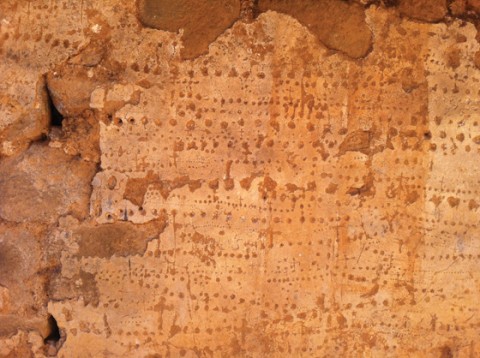Marking Time

In Mexico's ancient city of Pátzcuaro, researchers unearthed a wall with a history dating from pre-Hispanic times (as early as 1350 AD). The markings go back to the arrival of Europeans, when the wall functioned as a calendar. Each "regular" day is indicated by a dot bored into the surface of the wall. Each week (six dots in a string) is bookended by Sundays, symbolized by the etched shape of a cross. This practice of observing time within the frame of the Christian weekly holy day is a strong statement of faith, belief and practice. The archaeological site is at the Museo de Artes e Industrias Populares.
—Lois Huey-Heck





